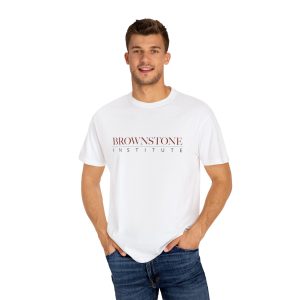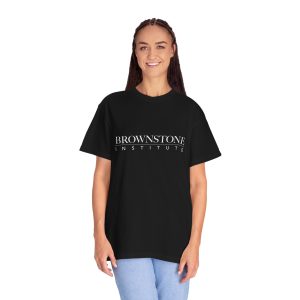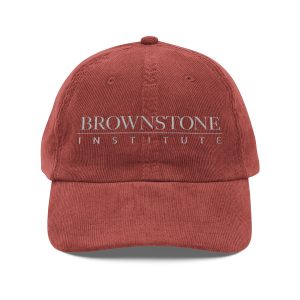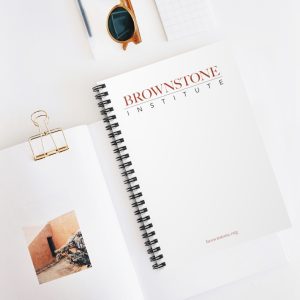Every Saturday morning in the mid-1980s, my mom would drop me off at the Commack flea market in central Long Island. While other kids were watching cartoons, I spent hours at Albert’s baseball card table, absorbing stories about Mickey Mantle’s rookie year, and understanding how to spot counterfeit cards by the subtle variations in cardstock texture.
The early morning light would filter through the market’s canvas tarps, the musty smell of old cardboard mixing with coffee from nearby vendors. Albert, well into his eighties, wasn’t just a vendor – though he didn’t know it, he was a curator, historian, and mentor. Having witnessed the golden age of baseball firsthand, his stories were living history – tales from a time when baseball was America’s true national pastime, knitting together communities in the post-war boom. He taught me that real knowledge wasn’t just about memorizing statistics; it was about understanding context, recognizing patterns, and learning from those who came before.
While I loved the game, the cards were physical manifestations of data, each one a node in an intricate web of information. The baseball card market was my first lesson in how information creates value. Price guides were our search engines, monthly card shows our social networks – gatherings where collectors would spend hours trading not just cards but stories and knowledge, building communities around shared obsessions
Baseball wasn’t just a sport for me – it was my first religion. I treated batting averages like verses of scripture, memorizing them with the devotion of a scholar poring over ancient texts. I knew every detail of Reggie Jackson’s three home runs in the ’77 World Series, but what really captivated me were the almost mythological tales of baseball’s distant past – Jackie Robinson’s electrifying career and flair for the dramatic, Babe Ruth calling his shot in the ’32 Series, and Christy Mathewson and Walter Johnson’s duels in the dead-ball era.
These weren’t just facts to me; they were legends passed down through generations, as rich and detailed as any ancient mythology. Adults would either marvel or become slightly unnerved at my encyclopedic knowledge spanning nearly a century of baseball history. This wasn’t just memorization; it was devotion. (Though nowadays, if my parents regularly left me with an octogenarian we hardly knew at a flea market, they’d probably face a visit from Child Protective Services.)
The flea market was just one part of a Gen X childhood where discovery took different forms. While Albert taught me about organizing and valuing information, our neighborhood adventures – governed by the single rule “be home by dark” – taught me about exploration and independence. Our bikes were our passports to the world, taking us wherever curiosity led.
Whether pedaling to distant neighborhoods, building rickety forts, or learning through scraped knees, we were constantly discovering through direct experience rather than instruction. Each space offered its own lessons on how to learn, think, and find meaning in the world around us.
As high school arrived, my obsession shifted from baseball cards to music, and the local record store became my new sanctuary. Like something out of High Fidelity, the guys behind the counter at Tracks on Wax in Huntington were my guides through musical history, just as Albert had been with baseball history.
My journey began with inherited vinyl – my parents’ well-worn copies of Beatles albums, Crosby, Stills & Nash records that had survived countless moves, and Marvin Gaye LPs that carried the sonic DNA of a generation. The guys behind the counter had their own curriculum – ‘If you like Bob Dylan,’ they’d say, pulling out a record, ‘you need to understand Van Morrison. Each recommendation was a thread connecting genres, eras, and influences. The posters and pins I bought became badges of identity, physical markers of who I imagined myself to be – my evolving taste becoming my evolving self.
College brought a whole new dimension to musical discovery. The dorm rooms became laboratories of shared taste, where knowledge flowed peer-to-peer rather than from expert to novice. We were no longer just studying musical history – we were living it, discovering our generation’s own sound. We’d spend hours exploring each other’s collections, from Seattle’s emerging grunge scene to the innovative beats of A Tribe Called Quest and De La Soul.
At the record stores I discovered near campus, the physical act of discovery was sacred – you’d flip through crates until your fingers were dusty, squint at liner notes until your eyes hurt, and carry your finds home like treasures. The limitations of physical space meant every shopkeeper had to make careful choices about their inventory. These constraints created character; each store was unique, reflecting its curator’s expertise and community’s taste. Unlike today’s infinite digital shelves, the physical constraints demanded thoughtful curation – every inch of space had to earn its keep.
After graduation in ’95, while the digital revolution was just beginning, I found myself building websites for businesses – my first ‘real’ job in what would soon be called the internet economy. That obsessive knowledge of baseball stats then found a new outlet when my buddy Pete and I started one of the first fantasy sports communities on the internet. We’d gone from hunting through magazines and desperately seeking other fans to building an entire online community.
When Ask Jeeves acquired our company, I was riveted by what seemed like the ultimate promise: unlocking the world’s information. The ability to instantly search and access any piece of knowledge felt like having the keys to the universe. Looking back, I probably should have realized that a kid obsessed with organizing baseball statistics would end up working in fantasy sports and search engines. Some people find their calling early – I just happened to find mine in the nerdiest possible subcultures.
By the late ’90s, I was making grandiose predictions about how the world would change – though honestly, I barely understood how the real world worked. Here I was, having gone from a teenager selling ice cream on the beach and waiting tables to suddenly pontificating about digital transformation – a kid who had never held a real job, completely clueless about supply chains, labor, manufacturing, or how businesses actually operated.
Still, even in my naivety, my instincts weren’t wrong. Our generation straddled a unique divide – we were the last to grow up fully analog but young enough to help build the digital world. We understood both the limitations and the magic of physical discovery, which gave us a perspective that neither our parents nor our children had. We became the translators between these two worlds.
The transformation wasn’t just happening in sports and careers. By the early 2000s, Napster made every song freely available, Google made information infinite, and Amazon made physical stores optional. The promise was democratization of knowledge – anyone could learn anything, anytime. The reality was more complicated.
As Noam Chomsky once observed, “Technology is just a tool. Like a hammer: you can use it to build a house, or you can use it to smash someone in the face.” Every technological advance was simultaneously creation and destruction – building new ways to access information while demolishing old ways of discovering it. The digital revolution built incredible things – unprecedented access to information, global communities, new forms of creativity. But it also demolished something precious in the process.
Yes, information became abundant, but wisdom became scarce. The Alberts and record store guys were supplanted by recommendation algorithms optimized for engagement rather than enlightenment. We gained convenience but lost serendipity. The digital card catalog might be more efficient than the physical one, but it doesn’t teach you how to think about information – it just serves it up.
When Albert would tell me about a baseball card’s value, he wasn’t just quoting a price guide; he was teaching me about scarcity, condition, historical context, and human nature – lessons about authenticity that feel especially relevant in today’s age of carefully curated online personas and AI-generated content. When those record store clerks made recommendations, they weren’t just matching genre tags; they were sharing their passion, transferring not just knowledge but a piece of their humanity.
These weren’t algorithmic suggestions but moments of genuine connection, rich with context and alive with shared enthusiasm. You remember not just what they taught you, but the smell of the store, the afternoon light through dusty windows, the excitement in their voice when introducing you to something new. These weren’t just transactions – they were apprenticeships in how to think critically about the information in front of us.
These lessons about human connection and discovering took on new meaning as I watched my own children navigate today’s digital landscape. Recently, helping my kid study for a geometry test about finding the length of a hypotenuse, I found myself turning to ChatGPT – both as a refresher for concepts I’d long forgotten and as a teaching tool.
The AI broke down the Pythagorean theorem with a clarity that reminded me of Albert’s baseball card lessons. But there was a crucial difference. While Albert was giving me not just facts but crucial context and meaning, AI platforms – as powerful as they are – can’t replicate that human wisdom that knows when to push, when to pause, and how to spark that critical love of learning. Mark, one of my oldest friends and an expert in this area, has gone much deeper than me in exploring these technologies, helping me understand both their power and risks. His advice: test AI only on questions you already know the answers to, using it to understand the system’s biases and guardrails rather than treating it as an oracle.
We’re still learning how to integrate these technologies into our lives, much like we did with search engines and the internet – remember when answering a simple historical question required a trip to the library? Or on a more frivolous level, when you couldn’t instantly check IMDB to see if an actor was in a movie? Each new tool requires us to develop new literacy about its strengths and limitations.
This echoes what Brownstone author Thomas Harrington, one of my favorite writers and thinkers, warns about in his thoughtful analysis of modern education: we’re increasingly treating students as information processors rather than developing minds that need human guidance. He argues that while our culture venerates mechanical solutions, we’ve forgotten something fundamental – that teaching and understanding are deeply human processes that can’t be reduced to mere data transmission.
Each student is, in his words, ‘a flesh and blood miracle capable of the most radical and creative acts of mental alchemy.’ Technology can make information more accessible, but it can’t replicate the human wisdom that knows when to push, when to pause, and how to spark that critical love of learning.
This balance between technological tools and human wisdom plays out daily as we watch our teenagers navigate their digital landscape. My wife and I find ourselves simultaneously fighting and embracing modernity. I taught our oldest chess, but he honed his skills through an app. Now we play with a physical board most nights, talking through strategies and sharing stories between moves.
The same dynamic shapes their relationship with basketball – they combine hours of physical practice with endless scrolling through social media and YouTube tutorials, studying moves and strategies in ways that were not available to us. They’re creating their own blend of physical and digital mastery. As parents of teens, we can’t direct their journey anymore; we can only put wind in their sails, helping them understand when to embrace technology and when to step away from it.
The pattern recognition I gained through baseball cards, the record stores that showed me how to curate knowledge, and yes, even the freedom to roam until dark – to explore, to fail, to learn from our mistakes – these weren’t just nostalgic experiences. They were lessons in how to think, discover, and learn. As we navigate this AI revolution, perhaps the most valuable thing we can teach our kids isn’t how to use these powerful capabilities, but when not to use them – preserving space for the kind of deep, human learning that carries real weight – the kind no algorithm can replicate.
Join the conversation:


Published under a Creative Commons Attribution 4.0 International License
For reprints, please set the canonical link back to the original Brownstone Institute Article and Author.









